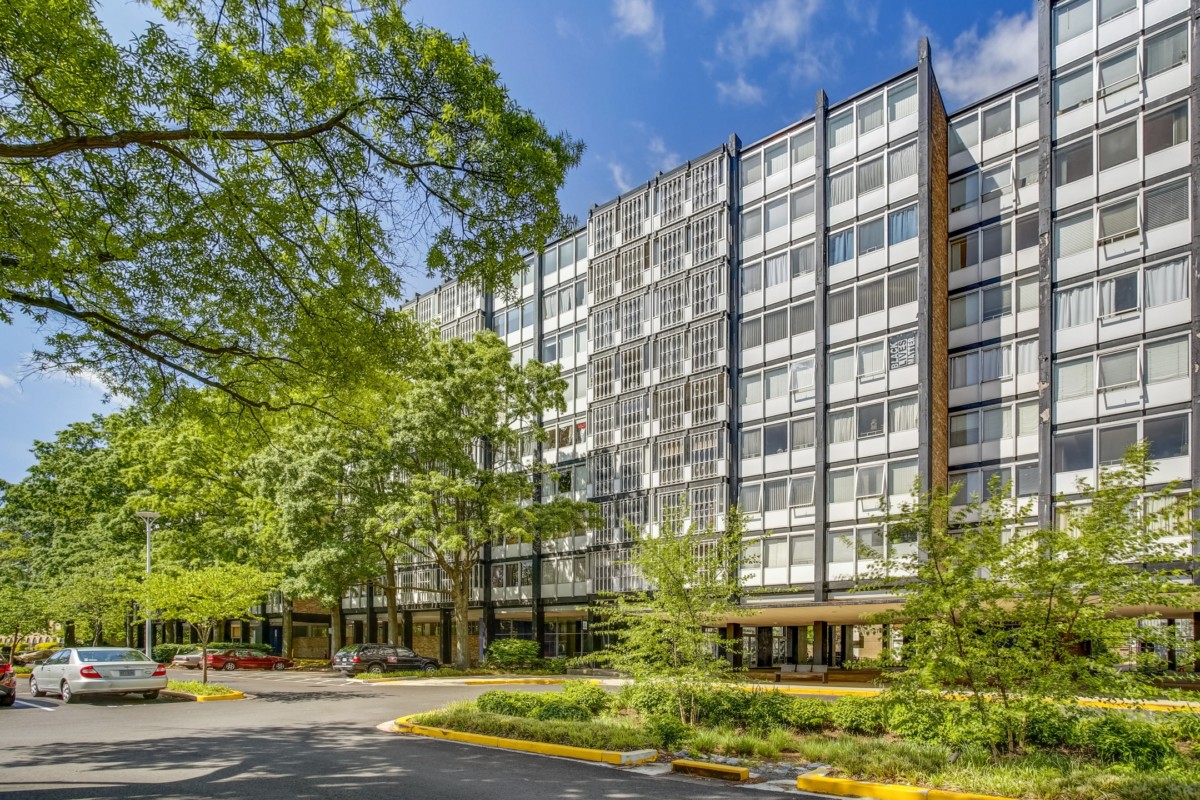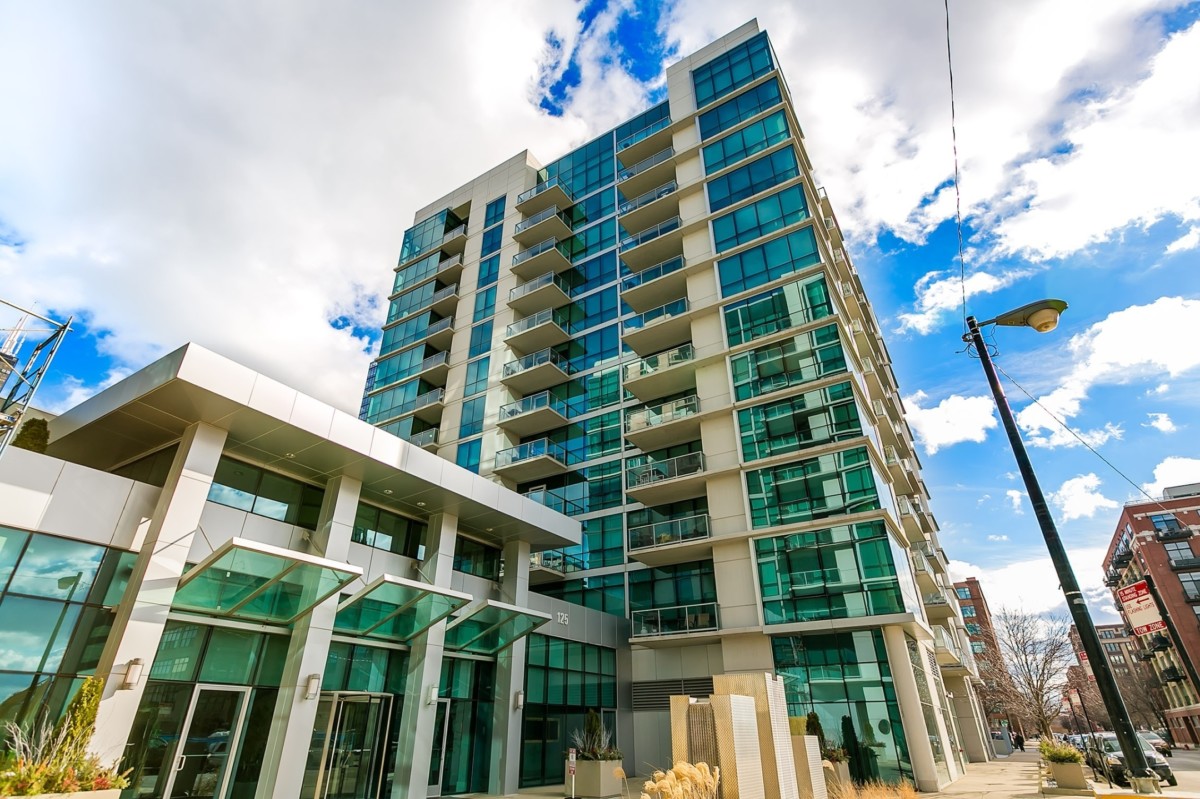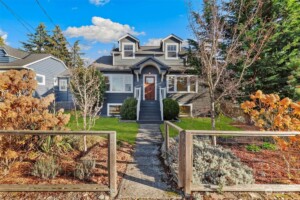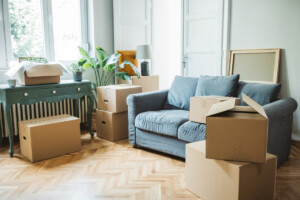Moving to a new location can be an exciting time. You’re thrilled to explore a new city but also anxious to find an apartment to call home as soon as possible. However, there’s more than just rent and location to consider when apartment hunting. Whether you’re planning on moving across the country or to a new building in your current city, we put together information to help you prepare for the costs associated with moving into a new apartment, such as the security deposit, renter’s insurance, broker’s fee, and furniture essentials, to name a few.
Read on for answers to common questions like:
- How much is rent?
- How much do apartments cost based on location?
- What other costs come with renting an apartment?
- How can I reduce my expenses?
To understand how much an apartment costs, you’ll need to learn what factors contribute to rental costs. Most cities have apartments for rent at a range of different prices. To focus your search on units you can reasonably afford, keep in mind the rule thumb that says your income should be at least 3x your rent. That means to afford an apartment that rents for $2,000 per month, your monthly income needs to be at least $6,000 per month.
How much is rent? The national average cost to rent an apartment
The national average rent cost for an apartment increased by 22.1% between January 2021 and January 2022.
- One-bedroom apartments in 2022 rent for an average rate of $1,683 per month.
- Two-bedroom apartments in 2022 rent for an average rate of $1,977 per month.
The most significant reason for the increase in apartment costs is a low supply and high demand. Many renters are staying put in their apartments and renewing their leases for another year. Some renters had planned to buy a house, but the market for entry-level homes remains tight, with new listings of homes for sale down 10% from a year earlier and rent prices continuing to rise.
This shortage of homes to buy has impacted the rental market, which has tightened up apartment vacancies – renters are not moving out at the same rate as they did in the past and with less supply, landlords are asking for more rent and being pickier about their tenants when vacancies arise. While this situation is common across the country, actual vacancy rates and rent increases vary from state to state.
How much does an apartment cost in your state?
The national average rental rate for apartments is helpful as a rough estimate for what you should expect to pay for your next apartment, but costs will vary by state and size of the city. For example, an apartment in a large city will typically cost more than an apartment in a suburban or rural area.
Below is a table that lays out average costs for one and two-bedroom apartments in every state for 2021 and how that has changed from the previous year. Except in Nebraska, where rents have slightly decreased on average, all other states have experienced varying increases in rental prices.
| State | Avg Rent 1 Bedroom Apartment (2021) | Avg Rent 2 Bedroom Apartment (2021) | YoY % Change |
| AL | $987.22 | $1,151.31 | 1.46% |
| AR | $790.73 | $809.58 | 11.41% |
| AZ | $1,524.27 | $2,013.13 | 53.15% |
| CA | $2,602.09 | $3,116.02 | 21.51% |
| CO | $1,919.08 | $2,240.01 | 21.95% |
| CT | $1,779.81 | $2,291.56 | 23.44% |
| DC | $2,565.37 | $3,244.95 | 16.68% |
| DE | $1,515.81 | $2,104.65 | 11.30% |
| FL | $2,035.75 | $2,334.63 | 45.63% |
| GA | $1,513.59 | $1,663.66 | 29.29% |
| IA | $893.60 | $1,028.48 | 6.47% |
| ID | $1,375.14 | $1,440.54 | 60.49% |
| IL | $1,363.54 | $1,695.91 | 26.72% |
| IN | $1,005.18 | $1,196.96 | 11.33% |
| KS | $1,103.97 | $1,282.14 | 40.90% |
| KY | $1,040.04 | $1,080.66 | 28.61% |
| LA | $1,170.27 | $1,279.58 | 33.63% |
| MA | $2,467.84 | $3,130.79 | 25.89% |
| MD | $1,722.26 | $1,983.35 | 9.64% |
| MI | $1,191.06 | $1,351.97 | 14.86% |
| MN | $1,274.92 | $1,494.17 | 23.53% |
| MO | $1,190.36 | $1,255.62 | 13.21% |
| MS | $935.51 | $1,000.29 | 16.72% |
| NC | $1,368.38 | $1,520.46 | 22.46% |
| ND | $914.31 | $964.38 | 22.96% |
| NE | $992.47 | $1,181.25 | -1.22% |
| NH | $1,920.52 | $2,028.37 | 2.49% |
| NJ | $2,226.98 | $2,804.39 | 24.64% |
| NM | $1,024.02 | $1,780.94 | 9.84% |
| NV | $1,762.78 | $2,049.43 | 50.82% |
| NY | $2,210.48 | $2,516.03 | 13.35% |
| OH | $957.18 | $1,251.84 | 28.65% |
| OK | $865.16 | $973.94 | 25.85% |
| OR | $1,816.93 | $2,048.73 | 41.20% |
| PA | $1,698.28 | $2,035.94 | 17.41% |
| RI | $2,244.98 | $1,974.40 | 27.71% |
| SC | $1,355.33 | $1,498.27 | 30.56% |
| SD | $899.72 | $1,036.91 | 37.43% |
| TN | $1,386.46 | $1,478.51 | 16.83% |
| TX | $1,259.91 | $1,489.88 | 15.58% |
| UT | $1,387.00 | $1,630.88 | 31.79% |
| VA | $1,756.67 | $2,016.67 | 22.25% |
| WA | $1,972.61 | $2,427.79 | 13.55% |
| WI | $1,064.43 | $1,367.48 | 2.31% |
(Data sourced from Rent.com)
Because rents vary by state and city, you may be wondering what’s the best way for a renter to estimate how much they should budget for their next apartment. By far, the best way to start budgeting for the costs of renting is with the 30% rule.
Follow the 30% rule
What is the 30% rule? The 30% rule is originally from the Brooke Amendment of 1969 that measures rental affordability. This amendment helped to ensure that low-income renters in housing programs would not pay more than 25% of their income for housing, which in 1981, Congress raised the cap to 30%. Though this rule can certainly be applied to anyone and not just low-income renters.
How does the 30% rule work? This rule recommends that any household not spend more than 30% of its gross (before tax) income on housing costs. This rule is considered a helpful benchmark for anyone to gauge how much rent they can afford. Any renter can apply the 30% rule to evaluate their rental options and find an apartment that fits reasonably within their rental budget.
For example, say the national average rental rate for a two-bedroom apartment is $1,977 per month. In this instance, the household income should be $6,600 per month to cover rent and have enough left for food, utilities, and other expenses.
The 30% rule isn’t universally applicable, as everyone has a unique financial situation. Many people have student loans, car loans, or other recurring monthly debts to pay down. This means that even if their household income suggests they meet the 30% metric, they may need an apartment that costs much less to live comfortably. If that’s the case, consider an apartment that rents 20-25% of your gross income. Keep in mind the other costs you incur as a renter, which will affect the amount you can comfortably pay in rent each month.
Other costs to consider when renting an apartment
When considering apartment costs, you also need to look at the amount of money it’ll take to move into your new apartment, which varies by location and even by building. For example, in New York City, you may have to pay a broker fee of around 15% of the annual rent on an apartment. So, if your apartment is $2,000 a month, you’ll owe $24,000 for the year and will pay the broker $3,600. This doesn’t apply to no-fee apartments, but certainly, something to consider if you’re planning on renting in New York.
Here are 9 other costs to consider when renting an apartment
- Moving expenses – Whether you pack up your belongings and haul them yourself or hire a moving company to do it for you, you’ll have moving costs. The average cost to move is around $1,400, ranging between $800–$2,150 for a 2-person team to complete a local move (less than 100 miles). Most moving companies will provide you with a quote, so be sure to shop around to get the best deal.
- Security deposit – Your security deposit can be as much as one month’s rent. You may be on the hook for the security deposit along with the first and last month’s rent, which would add up to an amount that’s 3x the rent, all paid upfront. For the two-bedroom apartment renting for the national average rate of $1,977, this would mean an upfront cost that totals nearly $6,000.
- Application fees – When you apply to rent an apartment, the property manager or landlord will charge you for the background check they run, which can cost between $20–$100.
- Pet deposits – Pet-friendly apartments typically require a pet deposit in addition to your security deposit. This can range between $25–$500 per animal, and you may also pay extra rent $25–$50 per month because you have a pet.
- Parking – You may have to pay extra to park your car at your apartment, whether or not it’s your own designated parking spot. Some apartments offer garage rental for an additional $40–$200 per month, which you can use for your car, bike, sporting equipment, or other large items you want to store safely.
- Renters’ insurance – The average renter’s insurance cost in the U.S. is $168 per year or about $14 per month. This will of course depend on what you have covered in your insurance policy and vary from person to person.
- Utilities – The cost of utilities (water, gas, and electricity) may or may not be included in your rent. If you pay for utilities separately, your cost per month will depend on the size of the apartment, usage, location, and season. Paid separately, the average monthly utility bill for a one-bedroom apartment is $125, while a two-bedroom apartment averages $196.
- Laundry – Some apartment buildings have coin-operated machines available for tenants to use, shared with everyone in the building. The average cost per load will likely match the laundromat price (around $3-4) or come in slightly higher for the convenience of having onsite laundry facilities.
- Other expenses – If your rental has amenities like a gym or exercise room, pool, or sauna, this could be included in your rent or you may have to pay an additional $30-$45 per month.
Your expenses will add up quickly, so here are a few tips to help you cut costs when you move into an apartment.
9 tips to reduce your monthly expenses
1) Location: Choosing an apartment further from the main city center tends to be easier when looking for reasonable rents. Still, you’ll want to choose your location carefully, keeping more than low rent in mind. If possible, ask locals for advice or check out your area on Walk Score, which rates locations based on safety and walkability.
2) Wants vs. needs: Balancing wants and needs can be a significant piece of the savings pie for an apartment. A smaller apartment will rent for less than a larger one. If you can live comfortably without the extra space, even if you can afford a two-bedroom unit consider renting a one-bedroom unit instead to save some money.
3) Lease terms: Month-to-month leases are always more expensive than leases that extend for 12 months or more. However, if you plan to stay in the area for a while, consider opting for a two-year lease. Long-term leases can make your monthly rent more affordable. Plus, you’ll save on moving costs and new deposits, as well as any renewal fees charged to extend a short-term lease.
4) Energy consumption: It can be expensive to heat your apartment to a balmy 70 degrees in the winter or cool it to 65 in the summer. If you keep the temperature in your apartment to 65 degrees in the winter and 72 in the summer, you can save money on gas and electricity costs.
5) Roommates: A roommate can help save money on an apartment if you have the space. You can split all costs and put the extra into savings.
6) Furniture: It’s nice to have a well-furnished apartment, but keep your budget in mind when purchasing your furniture. You may find you can put up with a hand-me-down couch from a friend or family member if it saves you an extra $500.
7) Cable: Forgo cable or expensive satellite television services. With all the programs available on various streaming services, you’ll find that you won’t miss programming as much to save money every month.
8) Home cooking: Eating out can add up quickly. Even with scarce freezer space, you can keep a few protein, fruit, and vegetable staples on hand to whip up a homemade meal.
9) Transportation: In some larger cities like Los Angeles, CA, or Chicago, IL, you may need to rent a parking spot separately for several hundred dollars a month. It might make sense to sell your vehicle in favor of public transportation in these areas. But keep in mind that public transit has a cost as well, so you’ll want to factor in the cost of commuting when calculating your apartment budget.
Final takeaways
Your apartment search comes with excitement and anticipation of living in a new area – but uncertainty about apartment costs can throw you for a loop. Now you have a rough budget to guide your apartment search so you can focus on finding your new home in a location that suits your lifestyle. When considering how much an apartment costs, use the 30% rule as a starting point and factor in additional costs and your financial situation.





























 United States
United States Canada
Canada